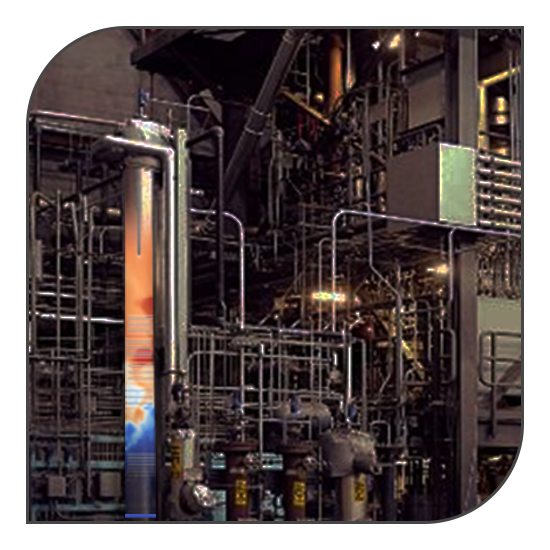APPLICATIONS
SOFTWARE TECHNOLOGY
CPFD Software is advancing multiphase simulation and technology for fluid-particle systems. Our primary physics-based engineering software products are Barracuda Virtual Reactor® and Arena-flow®.
Barracuda Virtual Reactor
Barracuda Virtual Reactor is general purpose software used to simulate the three-dimensional, transient, fluid-particle hydrodynamics, heat transfer, and chemical reactions in industrial fluidized bed reactors and other fluid-particle systems. Learn more…
Arena-flow
Arena-flow is specialty software software used by the metal casting industry to simulate the production of sand cores and molds. Learn more…
Award winning technology
High business value
Powerful yet simple
Complements other tools
Best-in-class support
-

Award winning technology
Use what the experts trust
-

High business value
Save money, reduce risk, accelerate development, and maximize sustainability
-

Powerful yet simple
Visualize physics like you were looking inside the actual system
-

Complements other tools
Specialty software for fluid-particle flows
-

Best-in-class support
We pride ourselves in your success
Award winning technology
Award winning technology
- Best Software Technology award from Hydrocarbon Processing
- Highly Commended by IChemE for refining and sustainability projects
- Multiple foundry awards from AFS and WFO
- Customers routinely win awards using our software technology
High Business Value
- Avoid costly mistakes, shutdowns and retooling
- Speed technology development and commercialization
- Scale-up with confidence
- Minimize energy requirements, carbon footprint and emissions
- Improve reliability and uptime
- Communicate technological merits to partners, customers and investors
- Maximize commercial applicability of research
Powerful yet simple
- Specialty software for industrial fluid-particle systems
- Look inside your reactor or tooling in virtual space
- Fast results with NVIDIA GPU technology
- Intuitive interface for engineers
- New users up and running quickly
- Extensible and customizable
Complements other tools
- Augments sound engineering practices
- Complements process simulation
- Complements CFD
- Complements DEM
Best-in-class Support
- 24/7 access to resources
- Live support from knowledgeable humans
- Customizable premier support options
CUSTOMER EXPERIENCE
This project delivered an excellent outcome, giving us confidence that specific hardware changes would restore the operation of our Cracker to the level we expect – which it did. Our…
read more
We get much more out of our experiments when we compliment them with the CFD modeling, specifically CPFD Software, Barracuda. We have a better understanding of what’s going on. It allows…
read more
Barracuda is a robust solution for modeling multiphase particle/gas flows, allowing densities up to the particle packing limit, and greater flexibility to include multiple particle materials, size distributions, and chemical…
read more
Using Virtual Reactor we’ve explored a wider range of possibilities than we ever could have considered using physical testing for scaling up to industrial size… the digitalisation technology enables us…
read more
This project delivered an excellent outcome, giving us confidence that specific hardware changes would restore the operation of our Cracker to the level we expect – which it did. Our…
read more
We get much more out of our experiments when we compliment them with the CFD modeling, specifically CPFD Software, Barracuda. We have a better understanding of what’s going on. It allows…
read more
Barracuda is a robust solution for modeling multiphase particle/gas flows, allowing densities up to the particle packing limit, and greater flexibility to include multiple particle materials, size distributions, and chemical…
read more
Using Virtual Reactor we’ve explored a wider range of possibilities than we ever could have considered using physical testing for scaling up to industrial size… the digitalisation technology enables us…
read more
This project delivered an excellent outcome, giving us confidence that specific hardware changes would restore the operation of our Cracker to the level we expect – which it did. Our…
read more
We get much more out of our experiments when we compliment them with the CFD modeling, specifically CPFD Software, Barracuda. We have a better understanding of what’s going on. It allows…
read more
OUR SOLUTIONS
-


Software Licensing
Invest in your in-house expertise! Virtual Reactor licenses can be deployed at your own facilities or seamlessly on the cloud.
-


Services
Prefer to focus on a particular project? Our experienced engineers are here to deliver results when you need them.
-


Training and Technology Transfer
Get started quickly! Try Virtual Reactor for yourself in an introductory training course or upgrade to a technology transfer program combining services with software licensing.
-


R&D Partnerships
Partner with us! We push the boundaries of fluidization and simulation technology and collaborate with global researchers with similar or complementary expertise.




